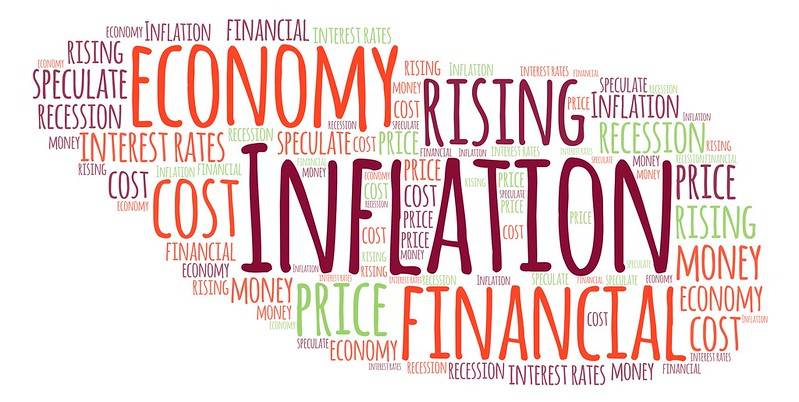
If you want to build your wealth long-term, it is important to understand inflation and how it is often underreported by the government. Many would agree that the Consumer Price Index (CPI) is understated intentionally by the government. Government entitlement programs and government employee wages are typically indexed to the CPI so the government can save money by understating inflation. Secondly, elected officials want to keep the electorate happy so they keep their jobs. If the electorate believes inflation is too high, they may be less likely to vote the incumbents back into office.
We discussed how the government can manipulate the inflation rate on episode 1175 of The Creating Wealth Show. In this article, we’ll discuss the three main ways that the government manipulates the reported inflation rate: hedonic indexing, substitution, and weighting.
1. Hedonic Indexing
The hedonic index is a way of claiming that inflation is low because of invention or progress. For example, if you buy an item in 2018 and then buy a replacement in 2020 for approximately the same price, analysts will contend you didn’t actually pay as much in 2020 if the item was significantly upgraded.
For example, if you paid around $2,800 for a computer in 2018, then bought a new model in 2020 for about the same amount—and if the new computer has twice the speed and power of the 2018 model—inflation rate analysts will say this is the equivalent of paying $1,400 for your 2020 computer. It was $2,800 out of your pocket, but you’re getting more value for that money.
Pros
There’s a certain logic to this argument, especially if you’re talking about an item that can significantly improve your standard of living, increase efficiency, or save you money in other ways. Yet there are also problems with factoring hedonics into the calculation of inflation rate.
Cons
The hedonic index allows for easy inflation rate manipulation. In the above computer example, the index suggests deflation in computer prices when the actual price remained the same. This allows the overall rate to appear lower than it is and masks the way asset prices, like housing, have inflated faster than the basic core inflation rate we’re given.
2. Substitution
Substitution is another potential method of manipulation because assumptions are made about how consumers will respond to a change in the market.
Claim up to $26,000 per W2 Employee
- Billions of dollars in funding available
- Funds are available to U.S. Businesses NOW
- This is not a loan. These tax credits do not need to be repaid
Pros
On the surface, this makes sense because people often replace an item if they can no longer afford it or if it is no longer available.
Cons
The problem with these substitutions is they are unpredictable and based on untenable assumptions. For example, if the price of beef rises significantly, analysts will assume everyone will buy chicken instead and stick within the same food budget. Thus a beef shortage or price escalation, in these calculations, won’t really affect inflation. Substitution fails to account for realities: some people don’t like chicken, and will absorb the increased cost of beef by cutting back on other, non-food areas that are calculated in the inflation rate, causing a ripple effect that is not reflected in the reported inflation rate.
3. Weighting
Weighting is another key way of manipulating the inflation rate. Basic weighting is done by first going out and sampling people to find out where their money goes. Analysts will then calculate what people are spending their money on and weight each area in the calculation according to how large a percentage of income it takes from the average household budget. So, for example, housing is usually considered the largest and most important category at often close to 40% of a family’s budget.
Pros
If a family is spending close to half their income on housing, it would stand to reason that any rise or fall in housing costs will affect them more than a change anywhere else.
Cons
The problem with the way things are weighted is that it’s too easy to give extra weight to something that doesn’t tend to inflate as much or as quickly as other items. This can make the inflation rate look more stable than it actually is.
The Owners Equivalent Rent, for example, purports to calculate how much rent a homeowner would have to pay if he suddenly substituted his owned house for a rental property. This is used to calculate the overall real estate market inflation rate, yet it ignores the market segment housing type and the price difference between cities (e.g. San Francisco versus Memphis).
(Bonus) Excluding Food and Energy (Core Inflation)
This may be the most amazing way the inflation rate is manipulated, and yet it goes practically unnoticed by most consumers. In fact, most would probably assume (if asked) that the inflation rate must certainly account for the costs of food and energy. Yet the government and its analysts exclude food and energy on the theory that they are more “volatile” than other prices and cannot give an accurate picture of the real inflation rate.
Pros
Consider what happens to gas prices whenever OPEC decides to increase or decrease production, there is a new oil discovery, or there is a major oil spill. Prices can fluctuate a lot during the year based on several factors.
Cons
The problem with excluding food and energy is quite simple: every single person depends on these for life. Not everyone has a mortgage, and not everyone pays for schooling for a child or even has a personal computer, but everyone has to eat, get to work, and stay warm. The price of food and energy directly affects how much money people have leftover to spend on rent, schooling, and other important items.
Conclusion
Inflation eats away at mortgage payments because the borrower is paying back the loan with cheaper dollars. If the inflation rate is higher than the government reports, you can use this knowledge to your advantage when investing in income properties with low long-term fixed rate mortgages.
Author Bio:
 Jason Hartman has helped thousands of investors acquire rental properties through his Platinum Properties Investor Network, which helps investors navigate through the process of out of state nationwide property investment. If you are interested in learning more about investing in a rental property, you can set up a free consultation with a JasonHartman.com investment counselor who can answer all your questions and help you find properties that may be a good fit for your investment goals. You can also browse currently available properties nationwide with detailed proformas at www.JasonHartman.com/Properties.
Jason Hartman has helped thousands of investors acquire rental properties through his Platinum Properties Investor Network, which helps investors navigate through the process of out of state nationwide property investment. If you are interested in learning more about investing in a rental property, you can set up a free consultation with a JasonHartman.com investment counselor who can answer all your questions and help you find properties that may be a good fit for your investment goals. You can also browse currently available properties nationwide with detailed proformas at www.JasonHartman.com/Properties.



